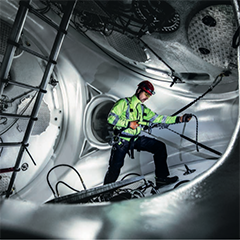With the world engaged in the energy transition and the environmental sustainability high on business agendas, scientists and governments are working to identify alternative technologies that will generate enough energy to meet the growing demand while reducing greenhouse emissions.
The wind sector and the energy transition
Within the transition trend, there is a wide portfolio of alternative energy sources available, from a large-scale development of hydrogen as a clean fuel, to renewable energy such as solar or wind power.
Offshore wind is considered as one of the fastest growing energy industries, with 2019 being the biggest growth year to date, and has the potential to create as many as 77,000 jobs within the industry on a global scale.
The importance of a workforce
According to the recent Global Wind Organisation (GWO) and Global Wind Energy Council (GWEC) report, as the offshore wind industry continues to thrive despite the impacts of COVID-19, we will see not only a substantial growth of the industry, but also the emergence of new markets, offering further opportunities in the sector.
In order to secure a healthy long-term growth and the necessary degree of sustainability of the sector, it is crucial that there is a skilled workforce available, able to support the industry’s ambitions and successfully implement policies.
As the new and emerging markets, including the USA, China, Taiwan, Japan, Brazil and the South Korea, will be looking to develop their own supply chains to support this booming industry focusing on local investment and job creation, a coherent roadmap outlining where and what training should take place is vital in order to support the establishment of the workforce and the successful growth of the sector.



























